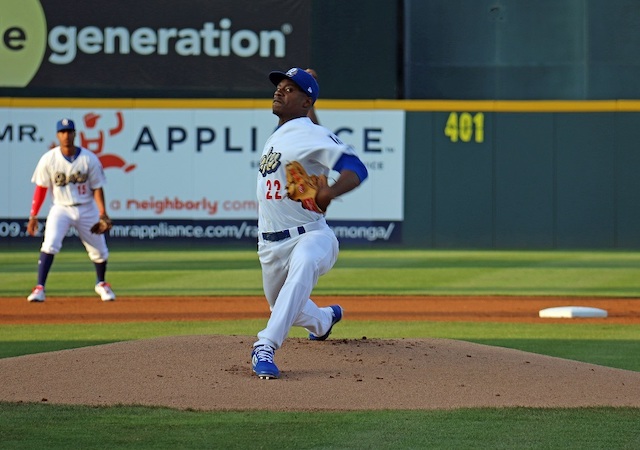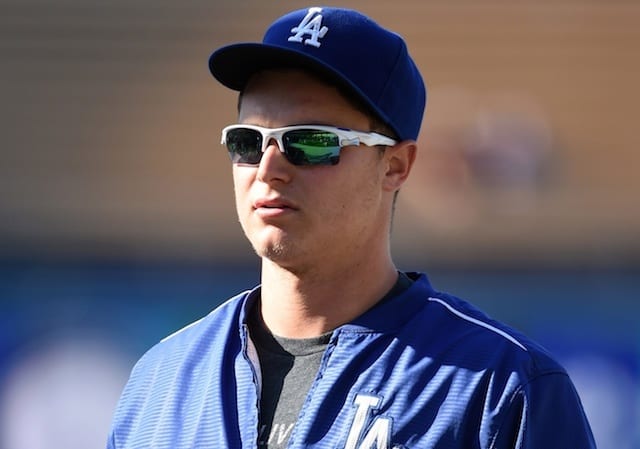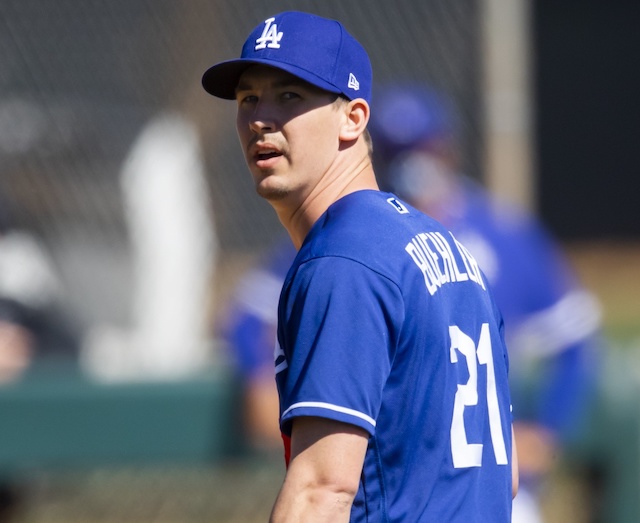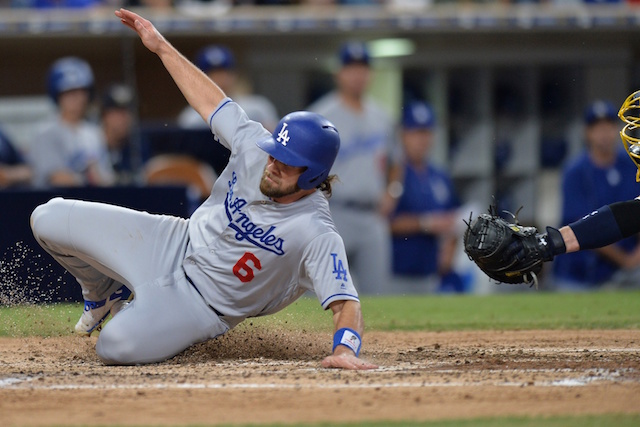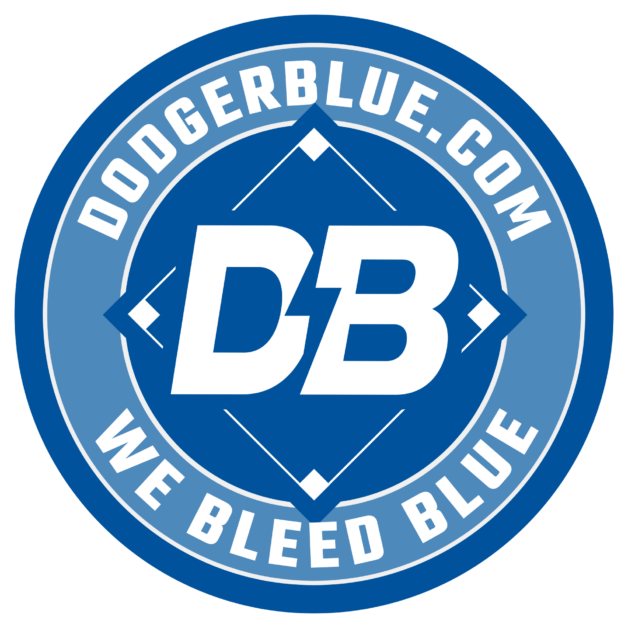Josiah Gray was getting ready to celebrate his 21st birthday in New York City when his phone rang. When he recognized the voice on the other end, Gray assumed Cincinnati Reds vice president of player development Shawn Pender was calling to wish him a happy birthday.
Instead, Pender told Gray that he and Jeter Downs had been traded to the Los Angeles Dodgers in the deal that sent Yasiel Puig, Matt Kemp, Alex Wood and Kyle Farmer to Cincinnati.
Around the same time, Downs was asleep on a couch at his home with the television on, knocked out from a long day of offseason training. He did not hear his phone buzzing with calls and text messages until his father woke him up with the news and turned on MLB Network.
“Honestly, just waking up from a nap, I thought it was a dream,” Downs told DodgerBlue.com.
The trade analysis that Downs heard on television that day probably centered around the three former Major League All-Stars that the Dodgers sent to the Reds — especially Puig, the subject of so much controversy and reported clubhouse friction during his tenure in Los Angeles.
From the outside looking in, Downs and Gray were initially afterthoughts, even though they both immediately entered MLB Pipeline’s rankings of the top 30 Dodgers prospects for the 2019 season.
Both played key roles in securing the best first-half record in the California League’s south division for the High-A Advanced Rancho Cucamonga Quakes.
After a quick promotion from Low-A Great Lakes shortly after the start of the season, Gray established himself in the top tier of Cal League pitchers alongside the likes of Mackenzie Gore, the San Diego Padres’ top prospect and a consensus top-five prospect across all of Minor League baseball.
Gray’s dominance continued when he allowed just one hit over seven shutout innings against the San Jose Giants on July 12. The performance lowered his ERA with the Quakes to 2.14 and further cemented his reputation as a skilled and intense competitor who steps up in big games.
“Coming from a small school, one offer to play college baseball, many things weren’t handed to me so I’ve always had to work hard and work a little extra to get where I’m at,” said Gray, a product of LeMoyne College in New York.
“Everything just stems from that. I’m just going out there, competitor, knowing that more or less, they’re not better than me. I’m gonna beat them with my stuff and my pitches and that’s the mentality that I have for every pitch I throw.”
That mentality served him well in his two duels with Gore, then of the Lake Elsinore Storm before a recent promotion to Double-A. In their first matchup on June 14, which Gray described as having a “crazy” playoff-type atmosphere, he allowed one run over seven innings while Gore allowed one run over four.
They went toe-to-toe again in the July 2 rematch, as Gore threw seven innings while Gray threw 6.2. Neither allowed a run. Rancho won both games on late rallies against Lake Elsinore’s bullpen.
“(Facing Gore) was something I really fed into because I really haven’t gone up against someone of his caliber just yet,” Gray said. “But I thrived in that situation and that was great.”
For Quakes manager Mark Kertenian, though, Gray’s competitiveness is just one of the mental qualities that makes the young right-hander so special.
“The biggest credit I can give to him is he’s valued every moment and prepared himself in between starts like a more veteran baseball player,” Kertenian said. “I think even beyond how competitive he is, there’s some real intelligence behind his actions.”
That preparation, competitiveness and unflappability allows Gray’s talent to shine through. It is the talent that helped persuade the Reds to select him in the second round of the 2018 MLB Draft, and is already impressing Major Leaguers like Austin Barnes, who caught Gray while on a rehab assignment with the Quakes.
“I thought he was really impressive,” Barnes said at the time. “Some of those fastballs, it’s got that life and that upshoot. … And he was striking his off-speed pitches. So I think that kid’s got a bright future.”
While Gray has caught the attention of several Dodgers devotees and prospect junkies, and earned a promotion to Double-A Tulsa, Downs is flourishing as well.
Before being sidelined with a minor hand injury, the Quakes’ everyday shortstop was batting .258/.332/.485 with 14 home runs — already the most he has hit in a season during his pro career.
Downs, the 32nd overall pick in the 2017 MLB Draft, jumped at the chance to learn from a new organization with a different staff and different coaches as he continues to grow as a hitter.
“I think that’s been the biggest thing for me, just learning myself and learning what works for me and what doesn’t,” Downs said.
“So it’s honestly always like a continuous learning phase in this game and I feel like I’m getting better at that and learning new things and talking to new people, getting new ideas.”
While Downs considers in-game experience his best teacher, his coachability and willingness to learn outside of that has helped him greatly, according to Kertenian.
“He’s been very receptive to the hitting department,” he said. “It’s been a nice two-way relationship and he’s, in his own creative way, put everything into use during his routines and his practice sessions.”
Gray, who says he is a fan of both Kemp and Puig, was flattered to be included in the same trade as them and to know that other teams had been watching his previous success in the Reds’ system and beforehand. Downs, meanwhile, chooses to focus more on what he can control.
“At the end of the day, I still have to do go out and do my job and perform, no matter who I get traded for, what team I’m on. … That’s what I try to focus on, not worry about the big picture,” Downs said.
Yet their success in transitioning to their new organization, around coaches and staff that did not draft them but welcomed them with open arms and taught them new things, bodes well for the futures of both Gray and Downs.
In Spring Training, Puig told reporters that he did not believe the Dodgers had traded him for anyone that could help them the way he could. But whether in another win-now midseason trade or as Dodgers within the next few years, Gray and Downs seem destined to prove that they were worth the cost.





